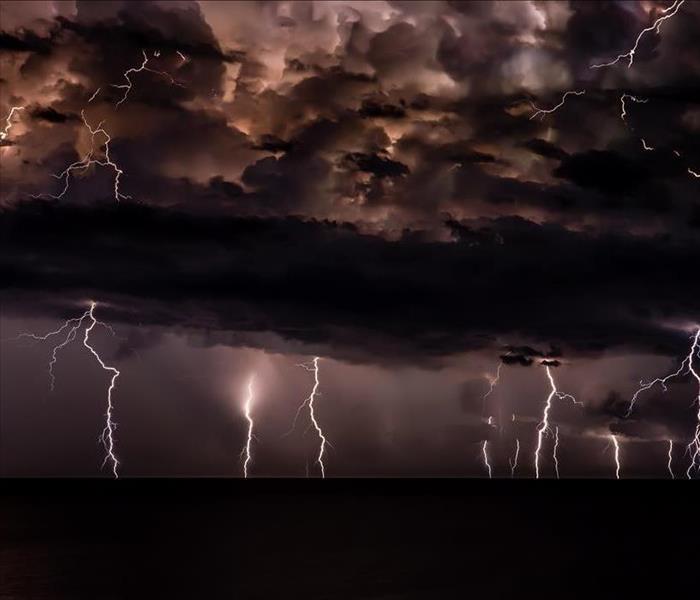Summer Storms Spark Lightning Damage
6/8/2021 (Permalink)
Every summer brings its fair share of storms, ranging from light rain showers to severe squalls, risking damage to homes, commercial buildings, and other structures. In an effort to help homeowners and business owners navigate the increased risk of storm damage with summer storms, we dedicate one or two blogs to storm safety every summer. In the past, such blogs have dealt with hurricane preparation and flash flooding. However, it is important to also emphasize the hazards of lightning in addition to flooding, fallen trees, and other forms of storm damage. Lightning can spark fires, power surges, and even major structural damage when it directly strikes commercial buildings and homes. In order to gain a more comprehensive understanding of the damage that lightning can do in addition to what steps you should take in the event that your home or business is struck by lightning, keep reading.
Types of Lightning Damage
Fire damage is perhaps the most predictable type of damage that would result from a lightning strike. Attics and top floors of buildings, due to their proximity to the roof, are especially vulnerable to fire after a lightning strike. Traveling via electrical circuit and wires, fire can also ignite in other areas of a home or business. In terms of the structure of a building in the aftermath of a lightning strike, roofs and attics can be destroyed, scorched by the lightning. Personal belongings can also be placed in jeopardy when lightning strikes a building, which propels electrical surges throughout the building’s structure. As a result, electronic devices, such as computers, televisions, and appliances, can be damaged significantly or become destroyed.
I Think That Lightning Struck My Building- What Should I Do?
If you hear a loud crash that transcends the usual volume of a distant roll of thunder or lightning strike, it is possible that your home or business has experienced a direct lightning strike. The risk of experiencing a direct lightning strike is low, but it is essential to know what to do in the event that it happens in order to minimize damage to your home or business as best as possible. The first step is to check for fire. As soon as it is safe to go outside, look for damage to your roof and your home or business’ surroundings. Inside, you should also check electrical switches, breakers, and outlets for signs of damage, as well as piping for leaks, which can lead to flooding. In the event that you discover damage of any kind, call a professional immediately.
SERVPRO Is Here to Help
Here at SERVPRO of Hunt Valley and Harford County, we are a team of storm damage professionals who are ready to help your home or business recover after lightning damage or storm damage of any kind. By calling us right away at (410) 229-0012, you can ensure that our team will be onsite quickly, prepared to make it “Like it never even happened,” by providing reputable Storm Damage Cleanup and Restoration Services. To learn more about the specific storm damage remediation services that we offer, check out our pages dedicated to such topics as Commercial Storm Damage Restoration. After storm damage of any shape or size, we also offer various cleanup services to fit your home or business’ unique needs, including Building Services such as Roofing Services in addition to Fire Damage Restoration Services and Mold Remediation. We know that every storm is different, presenting distinct and individualized challenges for every home or business that it affects. That’s why our team here at SERVPRO of Hunt Valley and Harford County tailors our services to every customer, working as quickly as we can to get you back to business as usual.





 24/7 Emergency Service
24/7 Emergency Service
